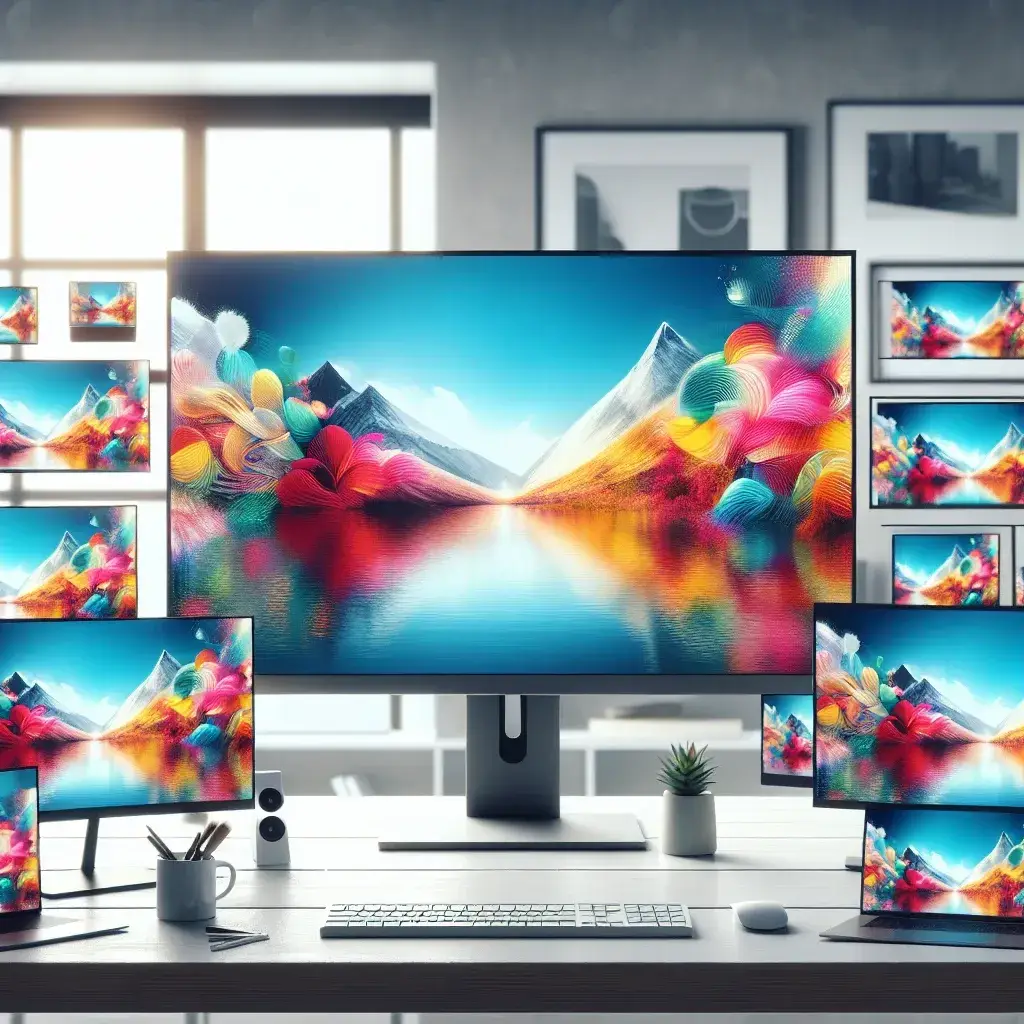
What are the common resolutions for LCD monitors?
When it comes to choosing an LCD monitor, one of the most critical factors to consider is the resolution. LCD monitor resolutions determine the clarity and detail of the displayed content, influencing user experience across various tasks from gaming to professional graphics work. Understanding the common resolutions available can help users make informed decisions to meet their specific needs.
| Resolution | Pixels | Popular Use |
|---|---|---|
| HD (720p) | 1280 x 720 | Basic computing tasks, office work |
| Full HD (1080p) | 1920 x 1080 | General use, gaming, multimedia |
| Quad HD (1440p) | 2560 x 1440 | Gaming, professional work |
| Ultra HD 4K | 3840 x 2160 | High-definition video editing, gaming |
| Ultra HD 8K | 7680 x 4320 | Advanced professional applications |
Understanding Monitor Resolutions
Resolution refers to the number of pixels that can be displayed on the screen. More pixels generally mean higher image quality and sharper visuals. The resolution is denoted as width x height (e.g., 1920 x 1080). Let’s explore the most common LCD monitor resolutions in detail.
HD (720p)
HD, also known as 720p, has a resolution of 1280 x 720 pixels. It is often considered the entry-level option, suitable for basic computing tasks such as browsing, office work, and watching standard-definition videos. Although outperformed by higher resolutions, HD provides an affordable display for everyday use.
Full HD (1080p)
Full HD, or 1080p, has a resolution of 1920 x 1080 pixels and is one of the most popular resolutions in use today. It offers a good balance between performance and affordability. Full HD is ideal for general use, gaming, and multimedia consumption, providing a sharp and clear image for a wide range of activities.
Quad HD (1440p)
Quad HD, also referred to as 1440p or 2K, boasts a resolution of 2560 x 1440 pixels. This resolution is a common choice among gamers and professionals who require a bit more detail than Full HD. Quad HD provides a noticeable improvement in image quality and is often favored for its enhanced sharpness and clarity.
Ultra HD 4K
4K resolution, or Ultra HD, features 3840 x 2160 pixels. As one of the highest widely-used resolutions, 4K offers exceptional image quality, making it ideal for high-definition video editing, gaming, and other graphics-intensive applications. The sheer number of pixels allows for highly detailed and crisp visuals.
Ultra HD 8K
8K resolution, resembling a stunning 7680 x 4320 pixels, represents the cutting edge of display technology. Primarily used in advanced professional applications such as digital film production and graphics design, 8K delivers an unparalleled level of detail and immersion, though it comes at a significantly higher cost and requires substantial computing power.
Factors to Consider When Choosing a Resolution
Use Case
Consider what you will mainly use the monitor for. Basic tasks won’t require ultra-high resolutions, whereas professional design or video editing will benefit greatly from higher pixel counts.
Hardware Compatibility
Ensure your computer hardware, particularly the graphics card, can support the resolution and provide adequate performance for your intended use. Higher resolutions demand more powerful components.
Screen Size
Monitor size and pixel density go hand in hand. A larger screen will often need a higher resolution to maintain image quality. For example, a 27-inch monitor with 1080p resolution might not look as sharp as a 1440p or 4K monitor of the same size.
Budget
While higher resolutions offer better image quality, they are usually more expensive. Align your choice with your budget, considering future-proofing and potential upgrades.
Viewing Distance
The distance from which you view the monitor can also play a role. Higher resolutions provide benefits that are more noticeable at closer distances, while at greater distances, the difference in quality may be less discernible.
Conclusion
Choosing the right LCD monitor resolution involves considering your specific needs, hardware capabilities, and budget. Whether you require a basic screen for everyday tasks or an advanced system for professional work, understanding the common resolutions can greatly enhance your decision-making process. Invest in a resolution that aligns with your needs to ensure a satisfying and productive experience.


